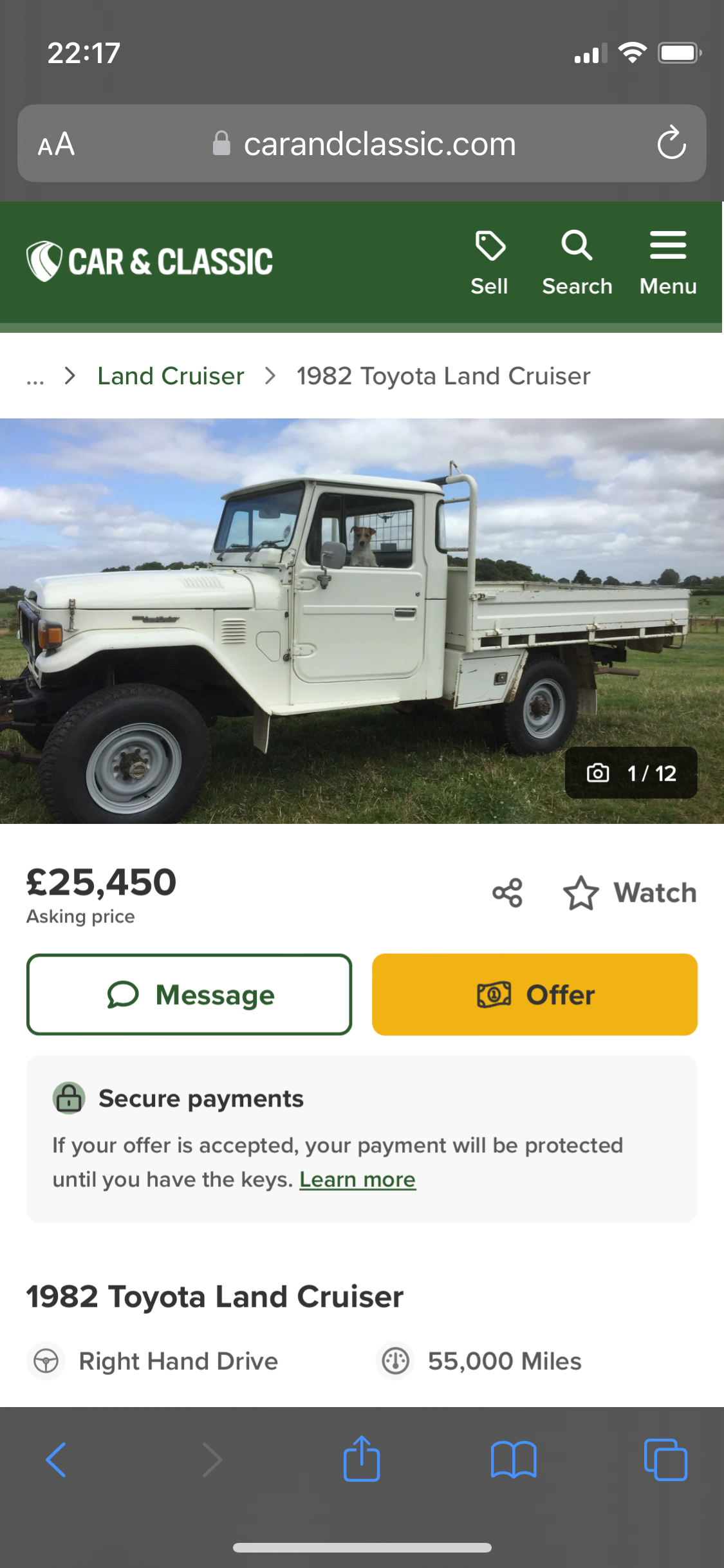You asked about the different engines, so, hopefully, the following will be of some use to you:
3B - 3431cc 4 cylinder diesel, is the stock diesel for the BJ40 is slow up hills so lots of gear changing but I found, and I live in the mountains, that if you change down before and at the start of a hill they will maintain a reasonable climb rate. This applies to the 2H engine as well. Regularly maintained they will go on forever.
2H - 3980cc 6 cylinder diesel, is stock in the HJ47 - if Australian then it is 12 volt. Same trick going up hills but I took the stock restricting exhaust manifold off mine and fitted headers so now the engine breathes and she climbs much better. I got an FJ60 set of headers , had new profiles cut to match the 2H manifold bolt pattern (they are the reversed on the FJ60), welded pipes and profiles and fitted. 2H is known as the 'million mile' engine but they are old style engineering. There are two types - the upgrade was in 1984 and things like the PAS pump are not interchangeable. I change the oil every 5000 kms and it uses nothing in between and I don't know the engine history because it came out of a HJ60.
With either engine don't expect to go anywhere quickly but both are super reliable. Also if you don't like being looked at or talking to strangers don't get a 40 series as people either remember them from when they were in Oz, Africa, the Far East or want to know what it is.
Both engines can be turbo'd and the factory 2HT, although getting rare to find now, is a great engine too.
All the belts are external to both engines as the 'timing belt' is via cogs.
The biggest problem is rust. When looking at one check the bottom of the front valances as mud gets between the support bar and the valance and rots it from the inside. Front wings where the support bar is welded to the wings as this traps mud (I have made mine detachable so I can separate to clean. Windscreen surround, bottoms of the doors as the drain holes get blocked. Driver's floor pan and rear floor , particularly if it's had a hard life in a wet climate. If hardtop, rain gutter which is bonded to the fibreglass roof. Rear doors and the underbody rear cross member which collects all the muck that the other panels have missed!
All the panels are available these days and if replacing a panel go for the best quality you can find. The stock metal is 14 or 16g depending so for instance I can stand on the bonnet without it denting.
In the tables I included you'll see reference to European models from 1979 onwards and they have an extra number in the VIN (an 8 or a 9) these came with disc brakes on the front and a few other parts but as Jon says the LX - 84/85 - is the best. The European models mostly went to Germany and France so are obviously LHD. Japan, Australia are RHD. Parts are hard to find for pre-1974 models and they have little in the way of driver comfort as they were workhorses.
Anything you're not sure about relating to 40s, just ask.
Regards,
Rodger






